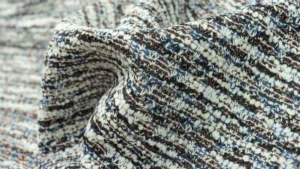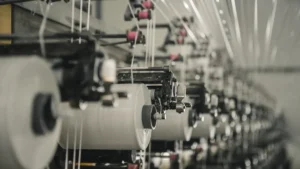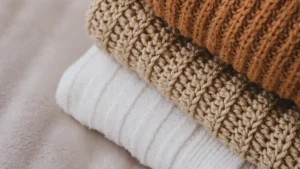
Here are 10 traditional scottish knitwear brands styles you should know:
Fair Isle
Shetland Sweater
Aran (Scottish Style)
Sanquhar
Gansey
Tartan Knits
Argyle
Houndstooth
Shawls & Wraps
Ghillie Shirt
You can see these styles almost everywhere. People wear a kilt with a ghillie shirt, or sometimes a tartan skirt paired with a colorful knit top with Scottish origins. Scottish clothes are easy to spot because of their bold patterns and long history. Highland dress, like the kilt and ghillie shoes, proudly showcases tradition. Scottish knitwear is famous and special. Kilt and skirt details are common in highland dress and fancy fashion. Many people love knitwear because it’s warm and stands out. You can find kilt patterns and ghillie details in new clothes, too. Traditional Scottish clothes and highland dress continue to inspire designers worldwide.
The knitwear tradition in Scotland remains strong. Even when exports declined, most textile workers in the Borders kept producing knitwear. Big brands like Prada and Burberry incorporate Scottish styles. Old traditions and new fashion blend in every Scottish outfit and knitted coat, especially when featuring a colorful knit top with Scottish origins.
Key Takeaways
Scottish knitwear has bold patterns and a long history. This makes it easy to spot and very special. Traditional styles like Fair Isle, Shetland, Aran, and Gansey show great skill. They also have unique designs. Scottish wool is very good quality. It is warm and soft. This makes the knitwear strong and comfy. Modern fashion mixes old Scottish patterns with new looks. This keeps the tradition alive and exciting. Wearing Scottish knitwear links you to a proud past. It also helps local makers and their culture.
Fair Isle
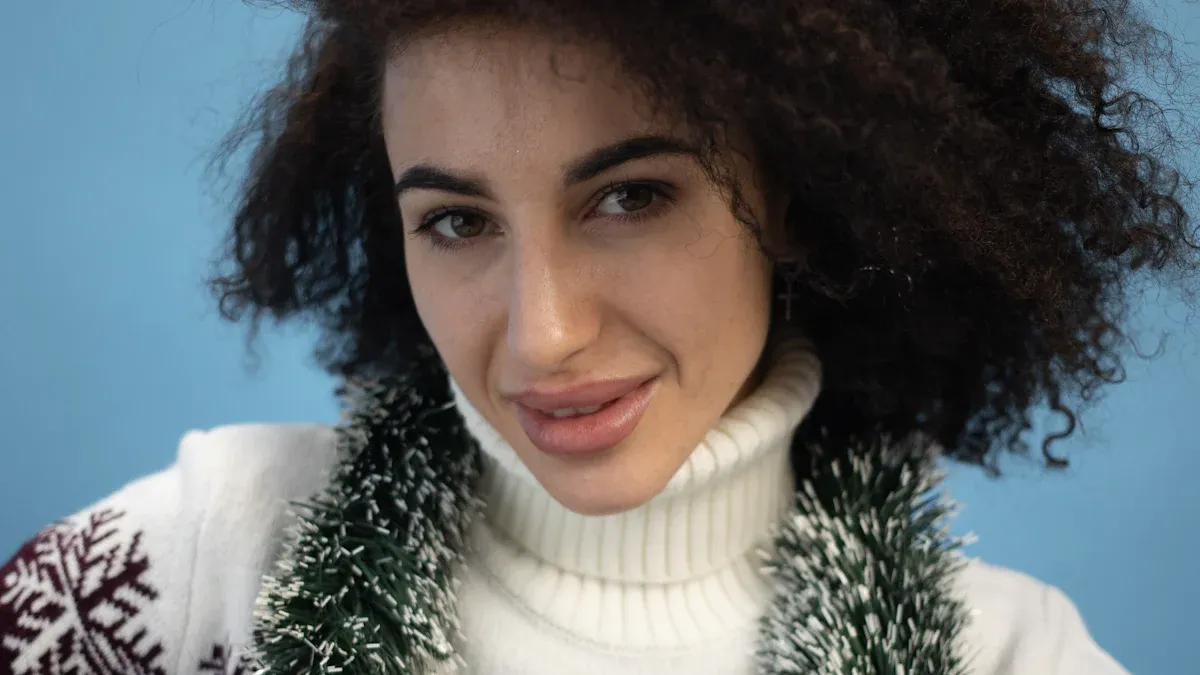
Origins
When you think about Scottish knitwear, Fair Isle stands out as a true classic. Fair Isle is not just a pattern; it is also the name of a small Scottish island in the North Sea. People on this island started making knitwear as early as the 18th century. Local women would knit practical sweaters and hats for their families and for trade. The craft grew with help from Scandinavian settlers and even shipwrecked sailors. You can see the Scottish roots in every stitch. Early knitters used natural dyes from plants and lichens found on the island. Over time, new dyes arrived, and the colors became brighter. By the 19th century, knitting had become a big part of life on Fair Isle. When Edward, Prince of Wales, wore a colorful knit top with Scottish origins in the early 20th century, the world noticed.
Fair Isle is both a pattern and a place in Scotland.
The tradition began in the 18th or early 19th century.
Local women made knitwear for family and trade.
Scandinavian and sailor influences shaped the craft.
Natural dyes gave early pieces their unique look.
Patterns
You will spot Fair Isle patterns by their bold, repeating shapes. Scottish knitters use a special stranded colorwork technique. They carry two or more colors of yarn along the inside of the fabric. This creates geometric shapes like ram’s horns, anchors, and XO motifs. The magic happens when you see up to five colors in a single row. Both the background and the design shift through shades, giving the fabric a shimmer. Scottish knitters focus on color harmony and clear patterns. This makes every colorful knit top with Scottish origins feel special.
Colorful Knit Top with Scottish Origins
A colorful knit top Scottish origins is more than just clothing. It shows off the skill and creativity of Scottish knitters. You can find these tops in many shades, from soft earth tones to bright reds and blues. The quality of the yarn and the careful color choices make each piece stand out. Scottish brands like Jamieson’s Knitwear and Harley of Scotland keep this tradition alive. When you wear a colorful scottish knit top with Scottish origins, you wear a piece of history and quality.
Modern Use
Today, Fair Isle knitwear is popular all over the world. You might see a colorful knit top with Scottish origins on a fashion runway or in a cozy café. Scottish designers blend old patterns with new styles, making knitwear that feels fresh but still honors tradition. People love the quality and warmth of Scottish knitwear. If you want to add a touch of Scotland to your wardrobe, try a colorful knit top with Scottish origins. You will enjoy the comfort, style, and quality that Scottish knitwear brings.
Shetland Sweater
Wool
When you touch a real Shetland sweater, you feel the difference right away. Scottish sheep from the Shetland Islands give you some of the softest wool in the world. This wool feels light but keeps you warm, even on cold days. Scottish knitters use 100% Shetland wool for these sweaters. You get a sweater that feels soft, lasts a long time, and shows true Scottish quality. The wool comes in many natural shades, so you see everything from creamy white to deep brown. Scottish farmers and knitters work together to keep this tradition strong.
Styles
You can spot classic Scottish Shetland sweaters by their simple shapes. Most have a crewneck or a V-neck. Some come as cardigans with neat buttons. Scottish knitters often use saddle shoulders, which means the shoulder seam runs along the top of your arm. This gives you a better fit and a clean look. You might see ribbed cuffs or hems, which help the sweater keep its shape. Scottish styles focus on comfort and quality, so you can wear these sweaters for years. The colors range from soft earth tones to bright, bold shades. You get a sweater that fits almost any outfit.
Modern Knitwear
Scottish Shetland sweaters have changed over time, but they never lose their classic charm. In the late 1960s and early 1970s, best scottish knitwear brands started to update their knitwear for new trends. Here are some ways Scottish Shetland sweaters adapted to modern fashion:
Scottish knitwear makers added details like decorative pockets and clever ribbing to refresh the look.
Some sweaters mixed plain and striped fabrics for a bold, modern twist.
Scottish brands balanced new designs with classic shapes to keep their identity strong.
The rise of youth culture pushed Scottish knitwear companies to offer more variety and originality.
You still see Scottish Shetland sweaters in both traditional and modern styles today. Scottish knitwear stands out for its quality, warmth, and timeless appeal. When you wear one, you carry a piece of Scottish history and style with you.
Aran (Scottish Style)
Fishing Roots
Many people think Aran sweaters are only Irish. But Scotland has its own Aran story. Scottish fishing villages needed warm, tough clothes. Families made sweaters for fishermen who worked in cold, rough weather. Knitters in Scotland shared ideas and patterns with each other. The “herring lassies” were women who followed fishing boats. They brought new knitting skills to Scottish towns in the early 1900s. These sweaters showed hard work and strong communities. Some people say each family had a special pattern. But that idea mostly came from stories made up to sell more sweaters. The real reason for these sweaters was to stay warm and show Scottish pride.
Cables
Scottish Aran sweaters have thick, raised patterns called cables. The cables twist and turn, making the sweater look rich. Scottish knitters use cables, braids, honeycombs, and diamonds. These patterns go up and down in neat lines. Alice Starmore, a famous expert, says the patterns were picked for their beauty. They also show off the stitches well. Most Scottish Aran sweaters use heavy, cream-colored wool. Early sweaters came in many colors. The white color became popular because it made the patterns easy to see. Some people say cables mean luck or safety. But most of these stories were made up to help sell sweaters. Scottish knitters cared about what looked nice and what people wanted to buy. Scottish and Irish styles are not the same. Scottish sweater types often mix in other patterns, like Fair Isle. Sometimes they even show clan crests, showing Scottish heritage.
Modern Use
Today, Scottish Aran sweaters are not just for fishermen. You see them everywhere, even in cities and on fashion runways. The fisherman style is now trendy. It mixes old Scottish charm with new looks. Many people like the cozy, old-fashioned feel of these sweaters. Scottish companies like Di Gilpin and Eribe work with many hand knitters. They mix old ways with new business ideas. They sell Scottish sweaters all over the world, even in China and Japan. Big designers and magazines also like Scottish Aran sweaters. You might see them in famous collections or on celebrities. The sweaters keep their classic look but fit in with today’s fashion. If you want something warm, stylish, and full of Scottish history, try a Scottish Aran sweater.
Sanquhar
Patterns
When you look at Sanquhar knitwear, you see bold, geometric patterns that stand out right away. These designs use only two colors, usually black and white or navy and cream. The patterns have names like Duke, Rose, Trellis, and Fleur de Lys. Each name tells a story about local people or events. You might notice diamonds, squares, and checkerboards repeating across the fabric. These patterns date back to the late 18th century and have stayed popular for generations. People in Sanquhar passed down these designs by teaching each other, not by writing them down. Only recently have knitters started to record the patterns on paper, making sure they don’t get lost. May MacCormick, one of the last experts, worked hard to write out many of the old glove patterns. Her work helps keep this tradition alive for you and future knitters.
Gloves
Sanquhar gloves are famous all over the world. You can spot them by their neat, two-color patterns and their special details. Knitters often add the owner’s name and the year right above the cuff, making each pair unique. The gloves have fringed cuffs and use a checkerboard pattern on the fingers and palm. On the back of the hand, you’ll see larger diamonds or wave shapes. People knit these gloves in the round, using several needles at once. This method makes the gloves strong and seamless. Museums in northern Yorkshire and Sanquhar show off these gloves, so you can see the real thing up close. If you ever try on a pair, you’ll feel the care and skill that goes into every stitch.
Heritage
Sanquhar knitwear is more than just clothing—it’s a piece of Scottish history. The tradition began as a cottage industry, with families making gloves and socks to sell or trade. Even when hand knitting started to fade in the 1800s, people in Sanquhar kept the craft alive. Museums and community centers in Sanquhar now display these patterns and teach new generations how to knit them. Pattern books and workshops help you learn the old ways. When you wear Sanquhar knitwear, you connect with a story that started hundreds of years ago and continues today. The patterns, the names, and the careful knitting all show the pride and creativity of the people of Sanquhar.
Gansey
Coastal Origins
The Gansey started in fishing villages by the sea. Fishermen wore these sweaters to stay warm and safe. Each town had its own Gansey style. Sweaters showed where a person was from. Sometimes, people knew lost sailors by their sweater patterns.
Every year, Robin Hoods Bay shows over 100 Ganseys. Years ago, there were only about 24. This shows people still love this tradition.
Making one Gansey takes about 300 hours. That is a lot of time and skill!
Fishermen often had more than one Gansey. They wore one for work and saved another for church.
Women in these towns knitted while walking or working. Knitting was important and made them proud.
Patterns
Gansey patterns have lots of meaning and history. You can see ropes, cables, diamonds, and special symbols. Some designs came from fishing tools or local stories. Families sometimes had many patterns. Knitters liked to make up new ones. Patterns were shared by talking, not writing, so each sweater was different.
Old photos from the 1860s show many Gansey patterns in one family. Ladders, anchors, and knots were popular. Some patterns came from sailors from other countries. Ganseys were knitted in the round. This made them strong and kept water out. They were great for life at sea.
Knitwear Today
You can still find Ganseys in museums and fashion shows. People even wear them on the street. Robin Hoods Bay now shows over 100 Ganseys each year. This proves the style is still loved. Modern knitters use old photos and stories to keep patterns alive.
If you want something special, try a Gansey. You will get a sweater that links you to the sea and history. The Gansey story goes on, and you can join it.
Tartan Knits
Scottish Knitwear Patterns
When you think of Scottish knitwear, tartan patterns come to mind right away. You see tartan everywhere in highland dress, from the kilt to the kilted skirt and even in cozy scarves. Tartan is not just any plaid. It has a special look with stripes of different colors crossing each other. Each pattern, called a sett, is unique. You might spot a kilt or a kilted skirt with a bold plaid at a Scottish festival or in a shop window. Scottish knitters use these patterns in sweaters, hats, and even socks. The plaid in Scottish knitwear stands out because it connects you to a long history. You can wear a kilted skirt or a plaid scarf and feel like you are part of something bigger.
Clan Colors
Tartan is more than just a pretty pattern. It tells a story about family and tradition. Long ago, the clan chief picked the colors and patterns for the tartan. Everyone in the clan wore the same plaid, whether it was on a kilt, a kilted skirt, or a scarf. These choices still matter today. Some tartans, like the Muirhead, have been around for over 150 years. You can find records of these patterns in places like the Lord Lyon Court. Scottish families keep their tartan alive through stories, old kilts, and even badges worn on bonnets. In the early 1800s, people started weaving tartan again by clan lines. This made the plaid in highland dress even more important. When you wear a kilt or a kilted skirt with your clan’s colors, you show pride in your Scottish roots.
Modern Fashion
Today, tartan knitwear is everywhere. You see it in highland dress, but also in street style and on runways. Designers love to use plaid in new ways. You might spot a kilt or a kilted skirt paired with a modern jacket. Tartan scarves have become winter must-haves in the U.S., and you see them as high-fashion pieces in Asia and Europe. Social media stars and celebrities wear Scottish plaid, making it even more popular. Many people like tartan because it uses eco-friendly wool and supports ethical makers. Heritage tartan patterns have more colors and detail than regular plaid, showing off true Scottish skill. Brands mix tradition with new looks, so you can wear a kilt, a kilted skirt, or a plaid scarf and feel both classic and cool. Tartan knitwear lets you celebrate Scottish culture while staying stylish.
Argyle
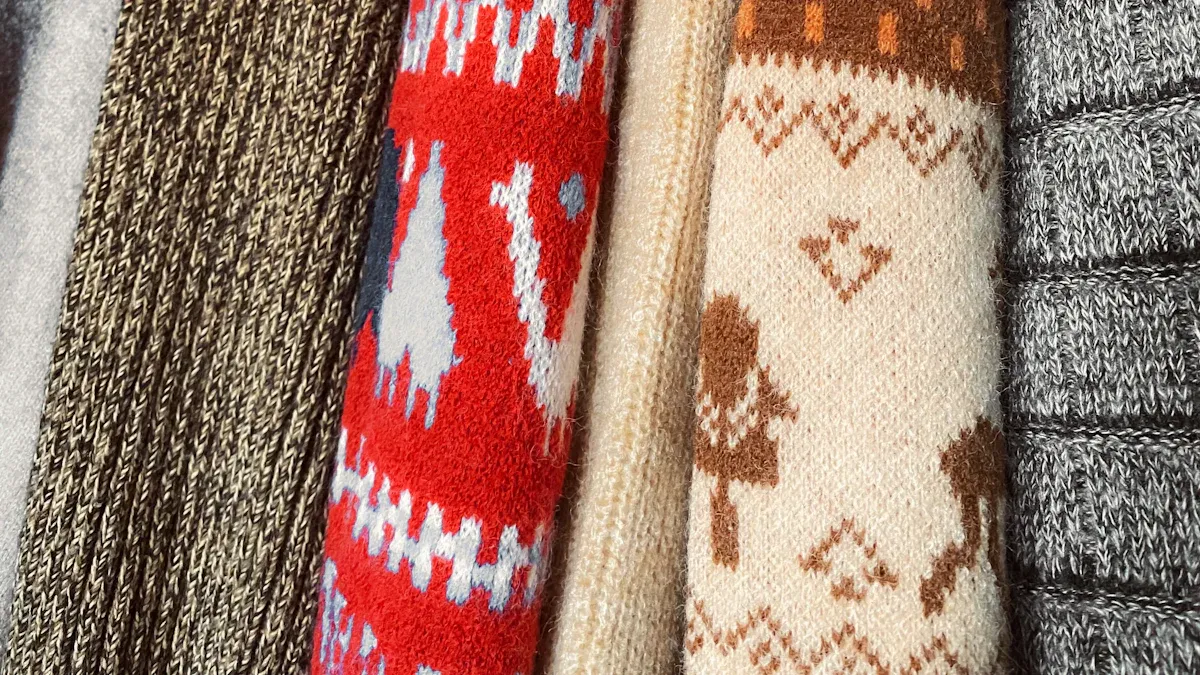
Diamonds
When you see Argyle, you notice the diamonds first. These shapes line up in neat rows, often with thin lines crossing through them. The pattern comes from the tartan of Clan Campbell, which is from Argyll in western Scotland. You can spot Argyle diamonds in many colors, from classic navy and green to bright reds and yellows. The design looks sharp and stands out on socks, sweaters, and vests. People love Argyle because it feels both classic and playful. The diamonds give your outfit a bold look without being too loud.
Golf
Argyle and golf go hand in hand. In the 1920s, Argyle patterns became a big part of golf fashion. The Prince of Wales, who later became Edward VIII, wore Argyle socks and sweaters while playing golf. This made the pattern famous on and off the course. Golfers like Bobby Jones and Payne Stewart helped make Argyle a symbol of golf style. You see Argyle on socks, knickers, and vests. The pattern is not just for looks. It keeps you warm and lets you move easily. Today, brands like FootJoy and Todd Snyder bring Argyle back with new fabrics and fresh designs. They mix old-school charm with modern comfort, so you get the best of both worlds.
Tip: If you want to show off your style on the golf course, try Argyle socks or a sweater. You will look sharp and feel connected to golf’s rich history.
Knitwear in Style
Argyle knitwear never goes out of style. Pringle of Scotland made Argyle famous in the 1920s, turning it from a Scottish tradition into a fashion trend. The Duke of Windsor loved Argyle, and soon everyone wanted to wear it. Today, you see Argyle in both classic and modern outfits. Designers use the pattern in new ways, mixing it with bright colors or high-tech fabrics. You can wear Argyle knitwear to a party, on the golf course, or just to stay cozy at home. The pattern lets you show your personality and your love for Scottish heritage. Argyle brings a touch of elegance and fun to any wardrobe.
Houndstooth
Borders
You might spot houndstooth first in the Scottish Borders. This area is famous for its weaving history. Local weavers created the pattern using wool from nearby sheep. Houndstooth started as a way to make sturdy cloth for shepherds. You can imagine walking through the rolling hills and seeing people wearing jackets with this bold design. The pattern became a symbol of the Borders’ craft and skill. People in the region took pride in their work. They passed down weaving secrets from one generation to the next. Today, you still find some of the best houndstooth fabric coming from Scottish mills.
Check Pattern
Houndstooth looks like a broken check or a jagged checkerboard. The pattern uses two colors, usually black and white, but you can find it in many shades. Each shape looks like a dog’s tooth, which is where the name comes from. When you look closely, you see small, pointed shapes that repeat across the fabric. This gives houndstooth a sharp and eye-catching look. You might see it on jackets, scarves, or even hats. The pattern stands out because it mixes tradition with a bit of fun. If you want to add something bold to your outfit, houndstooth is a great choice.
Tip: Try pairing a houndstooth scarf with a plain sweater. You will get a classic look that never goes out of style.
Modern Use
Today, you see houndstooth everywhere. Designers use it in coats, skirts, and even shoes. The pattern works for both men and women. You can dress it up for a fancy event or wear it with jeans for a casual day. Many brands use houndstooth to show off Scottish heritage. Some even add bright colors or mix it with other patterns. If you want to stand out, try a houndstooth jacket or bag. You will look stylish and feel connected to a long Scottish tradition. Houndstooth proves that classic patterns can always find a place in modern fashion.
Shawls & Wraps
Traditional Scottish Clothing
When you look at traditional scottish clothing, shawls and wraps stand out as some of the most important pieces. You see them in old paintings, family photos, and even at Scottish festivals today. Women often wore large woolen wraps called plaids over their dresses. These wraps kept them warm and showed off their clan’s tartan. Men wore the belted plaid, which was a huge piece of tartan cloth wrapped around the body and belted at the waist. This style started in the 16th century and became a symbol of traditional scottish clothing. The arisaid, a long white tartan wrap, was the female version. You can still spot these wraps at weddings, dances, and other big events. They help you feel connected to your roots and show pride in your heritage.
Patterns
Patterns play a big part in traditional scottish clothing. Each clan has its own tartan, and you can see these patterns in shawls and wraps. The Byre, Rani, and Ebb-stanes shawls are great examples. The Byre shawl uses bold stripes and deep colors. The Rani wrap has softer shades and a lighter feel. The Ebb-stanes shawl mixes classic checks with modern twists. These patterns do more than look pretty. They tell you about family, history, and even where someone comes from. Archaeologists found tartan cloth in Scotland from as early as the third or fourth century. That means people have loved these patterns for a very long time. When you wear a tartan wrap, you join a story that goes back hundreds of years.
Modern Adaptations
Today, you see shawls and wraps in both traditional scottish clothing and modern fashion. Designers use old patterns in new ways. You might wear a tartan wrap with jeans or a dress. Some people choose wraps to celebrate special events, like clan gatherings or Scottish holidays. Others wear them just to stay warm and stylish. Modern tartan designs even celebrate new events or achievements. This keeps the tradition alive and fresh. You can find wraps made from eco-friendly wool or with bright, bold colors. Shawls and wraps help you show off your love for scottish cultural clothing while fitting right in with today’s trends. If you want to add a touch of scottish traditional clothing to your wardrobe, a shawl or wrap is a perfect choice.
Ghillie Shirt
Jacobite Style
You might notice the ghillie shirt when you see someone wearing a kilt at a Scottish festival. The ghillie shirt has deep roots in Jacobite style. Back in the Scottish Highlands, ghillies—who were guides and helpers—wore these shirts long before the kilt became popular. The shirt stands out with its V-neck and leather lacing, which looks a lot like the laces on ghillie brogues. You don’t need a tie with this shirt, so you feel relaxed and free. The ghillie shirt pairs well with a kilt, but you won’t see it with a prince charlie jacket. That’s because the prince charlie jacket is for formal events, while the ghillie shirt is all about comfort and movement. If you want to dress like a Highlander from the Jacobite era, try a ghillie shirt with your kilt instead of a prince charlie jacket.
Traditional Wear
The ghillie shirt is a classic piece of traditional Scottish clothing. People wore it for centuries, especially at dances and ceilidhs. The shirt is light and roomy, made from cotton or linen, so you stay cool even when you dance all night. Ghillies, who worked as guides, loved these shirts because they could move easily. Today, you still see the ghillie shirt at informal events, paired with a kilt for a laid-back look. You might wear a prince charlie jacket with your kilt at a wedding, but for a ceilidh, the ghillie shirt is the top choice. The shirt’s design has not changed much, keeping its simple style and comfort. You can spot the ghillie shirt at Highland games, family gatherings, and even some modern weddings.
Tip: If you want to feel comfortable and look traditional, wear a ghillie shirt with your kilt instead of a prince charlie jacket.
Knitwear Influence
The ghillie shirt has inspired many knitwear styles in Scotland. You see its loose fit and open neck in some modern sweaters. Designers use the ghillie shirt’s lacing and relaxed shape to create new looks that still feel Scottish. Some knitwear even copies the criss-cross lacing on the front, just like the ghillie shirt. When you wear a kilt, you can mix a ghillie shirt with a cozy sweater for extra warmth. The prince charlie jacket and kilt combo is great for formal events, but the ghillie shirt and knitwear pairing gives you a casual, stylish vibe. The ghillie shirt shows how Scottish tradition can blend with modern fashion, letting you celebrate your roots in a fresh way.
Scottish knitwear brings you closer to a world of rich tradition and bold style. When you wear a kilt or add a tartan scarf, you celebrate highland dress and show off your scottish roots. The kilt, shawls, and wraps all connect you to a story that blends old and new. Local makers keep tradition alive by mixing handcraft with modern design. You help support skilled women and the scottish economy every time you choose a kilt or highland dress piece. Try adding a kilt, a cozy sweater, or a plaid wrap to your wardrobe. You join a living tradition and keep scottish highland dress strong for the future.
FAQ
What makes Scottish knitwear special?
You get unique patterns, rich history, and top-quality wool. Scottish knitwear feels warm and lasts for years. Each piece tells a story. You can wear tradition and style at the same time.
Can you wear Scottish knitwear every day?
Absolutely! You can dress up a Fair Isle sweater or keep it casual with jeans. Scottish knitwear works for school, work, or even a walk outside. It fits almost any outfit.
How do you care for Scottish wool sweaters?
Hand wash your sweater in cold water with gentle soap. Lay it flat to dry. Never use a dryer. This keeps the wool soft and helps your sweater last longer.
Are these styles only for winter?
Nope! You can wear lighter knits in spring or fall. Shawls and wraps work year-round. Scottish knitwear gives you options for every season.



